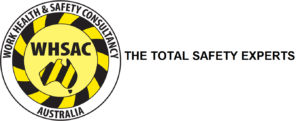Workplace Health & Wellbeing Programs
Work Health and Safety Australia Consultancy is pleased to offer a wide range of services to support health and wellbeing within the workplace. Well designed and well managed workplaces play a beneficial role in promoting worker health and wellbeing, minimising avoidable ill health, and facilitating faster recovery and return to work after injury or illness. Work practices, workplace culture, work-life balance, injury management programs and relationships within workplaces are key determinants, not only of whether people feel valued and supported in their work roles, but also of individual health, wellbeing and productivity.
Follow the link to the World Health Organisation Health & Wellbeing in the Workplace.
What is a healthy workplace?
A healthy workplace is one where workers and managers collaborate to continually improve the health, safety and wellbeing of all workers. Work health and wellbeing programs (work health initiatives) take into consideration the impacts that work environment and type of work can have on the health of workers. They also provide activities or initiatives designed to make the healthy choice the easy choices for workers.
Work health initiatives aim to positively impact worker productivity and performance, as well as the health and wellbeing of employees, families and communities.
Health and wellbeing initiatives include:
- healthy people – provide health information and build the knowledge and skills to adopt healthy lifestyles
- healthy places – provide a physical, social and organisational environments to support healthy choices. Provide healthy lifestyle opportunities and services for everyone in the workplace.
- communication and promotion – consult with workers and keep everyone informed and motivated through targeted communication. Promote participation in activities and encourage skill development.
Work health initiatives should:
- Build on an effective safety management system
- Complement workplace health and safety systems and duties
- Consider work design and environment
- Contributing to positive health outcomes for workers
- Adhere to the core principles of promoting good health at work
Work health, wellbeing and safety
The distinction between work and non-work related illness and disease is unclear. Expanding the scope of workplace health and safety to include health and wellbeing provides significant benefits which can improve your business’ safety performance, productivity and workplace culture.
Benefits for employers include (but are not limited to):
- Improved productivity
- Increased creativity and innovation
- Improved employee engagement
- Improved staff morale
- Reduced sickness-related absenteeism
- Reduced presenteeism (health-related work impairment)
- Increased attraction and retention of staff
- Reduced workplace injury and workers compensation costs
- Improved employee relations
- Improved corporate image
- Improved workability in an ageing workforce.
Benefits for workers include (but are not limited to):
- Improved health awareness and knowledge
- Improved physical and mental wellbeing and resilience
- Increased energy and vitality
- Increased work enjoyment and fulfilment
- Improved concentration and productivity
- Improved team relationships.
Evidence
In a recent evaluation, workplace health initiatives resulted in:
- reduction in sick leave absenteeism by 25%
- decrease in workers compensation and disability claims of 32%
- saving of $5.56 for every $1 invested in employee wellbeing.
Take the Health & Wellness Survey to evaluate your current health status.
For further information on how an effective health and wellbeing program can assist your organisation please contact us.
